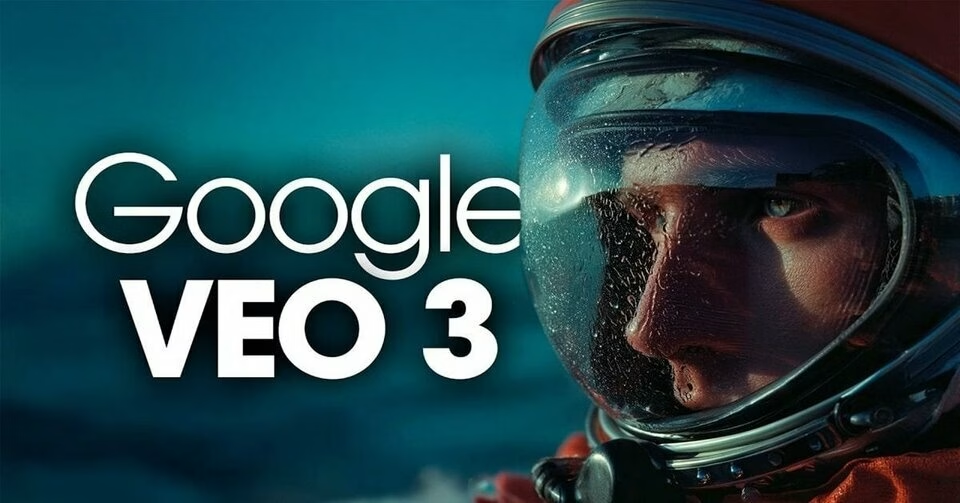YouTube Shorts Gets a Major AI Upgrade with Google's Veo 3
Well, folks, it looks like the short-form video game is about to get another significant shake-up. Just recently, the news broke – and it's been buzzing across the tech and creator communities, from Benzinga to Search Engine Land – that YouTube Shorts will soon be integrating Google's latest and greatest video AI model, Veo 3. This isn't just a minor update; we're talking about a potentially transformative leap in how content is created and consumed on the platform.
The announcement, which surfaced around June 18th, 2025, points to a rollout sometime "later this summer." So, we're not waiting long. What's the big deal, you ask? Veo 3 promises to dramatically improve video quality and, perhaps even more importantly, introduce native audio integration. Think about it: sound effects, ambient noise, even dialogue, all generated directly within the platform. This is a huge step for AI-powered content creation, and frankly, it's pretty exciting.
Understanding Veo 3: A New Era of Video Generation
So, what exactly is Veo 3, and why is it such a game-changer? At its core, Veo 3 is an advanced AI model capable of generating full videos from simple text prompts. We've seen text-to-image, even text-to-video in its nascent stages, but Veo 3 takes it up a notch. It's not just about visuals; it's about a holistic creation experience where the AI can weave in integrated sound effects, realistic ambient noise, and even dialogue, all from a single prompt.
This capability is what truly sets it apart from earlier AI video tools. Previously, you might generate a video, then have to layer audio on top using separate tools. With Veo 3, the soundscape is part of the initial creative spark. Imagine typing "a bustling city street with rain and distant sirens" and getting a high-quality video clip complete with the sound of raindrops hitting pavement and the wail of a siren fading in and out. That's the kind of seamless integration we're talking about. It's a significant leap, and it really does make you wonder about the future of digital storytelling.
The Impact on Content Creation and Creators
The implications of Veo 3's arrival on YouTube Shorts are vast, touching everything from content quality to creator workflows and even monetization strategies.
Enhanced Quality and Accessibility
First off, the sheer quality improvement is going to be noticeable. Higher-resolution, more stable, and visually richer videos could become the norm on Shorts. For creators, this means less time wrestling with complex editing software to achieve a professional look. It democratizes video creation in a way we've only dreamed of. Anyone with an idea and a few text prompts could potentially generate compelling visual content. This could lead to an explosion of creativity, but also, perhaps, a deluge of content.
The Monetization Question Mark
Ethical Considerations and the Deepfake Dilemma
With great power comes great responsibility, and Veo 3 brings with it a whole host of ethical questions. Gizbot News, for instance, raised concerns among creators about deepfakes and content saturation. The ability to create realistic videos, complete with dialogue, from a simple text prompt opens up a Pandora's box of potential misuse. Misinformation, fake news, and manipulated content could become even harder to discern.
This isn't just a theoretical problem; it's a very real challenge that platforms like YouTube will have to address head-on. How will they verify authenticity? What new policies will be needed to combat the spread of AI-generated misinformation? These are complex questions without easy answers, and honestly, it keeps me up at night sometimes. The industry experts I've talked to are excited about the tech, but they're also calling for responsible use and robust regulation.
Competing in the Short-Form Video Arena
The integration of Veo 3 into YouTube Shorts isn't happening in a vacuum. Short-form video content is, as we all know, incredibly popular, with platforms like TikTok leading the charge. While competitors have certainly been exploring AI technologies, Veo 3's native audio integration gives YouTube a distinct edge. It's a feature that previous AI video tools, even Google's own earlier versions, lacked. This could be a significant differentiator in the ongoing battle for creator and viewer attention.
YouTube is clearly investing heavily to maintain its competitive edge, and this move signals a strong commitment to leveraging cutting-edge AI. It's a smart play, especially when you consider the potential for advertisers. Search Engine Land pointed out the transformation potential for ad creation on Shorts with Veo 3. Imagine highly personalized, AI-generated ads that are perfectly tailored to a user's interests, complete with custom visuals and voiceovers. That's a powerful tool for brands.
Looking Ahead: A Pivotal Moment
The rollout of Google's Veo 3 on YouTube Shorts marks a truly pivotal moment in the evolution of AI video technology and digital content creation. It promises enhanced video quality, unprecedented audio integration, and a democratization of the creative process. For creators, it offers powerful new tools, but also presents challenges related to potential paid access and the ethical implications of AI-generated content.
As we move into the summer, it'll be fascinating to see how YouTube navigates these waters. Will the benefits outweigh the concerns? How will the community adapt? One thing's for sure: the landscape of short-form video is about to get a whole lot more interesting. And perhaps, a little bit more complicated.
